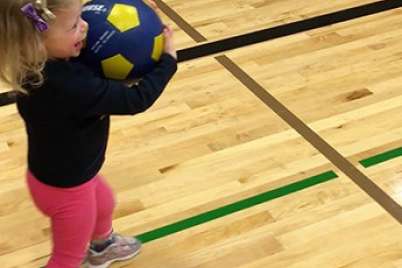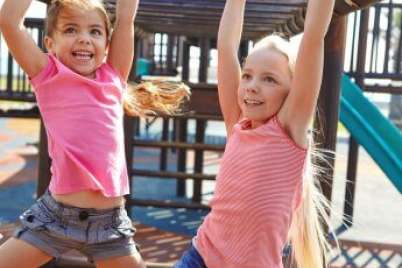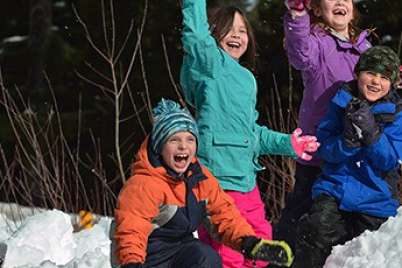
Hockey Canada’s top 6 off-ice sports and activities to help hockey players get better
Many hockey specialists and coaches profess that before anything else, a good hockey player should be an athletic player. What this means is that in order to achieve their full potential, young hockey players should develop skills beyond hockey and practice other sports.
To quote Corey McNabb, senior manager of player development at Hockey Canada: “The ability to learn agility, balance, and coordination that comes from playing a variety of sports, builds a solid foundation for athletic success, physical fitness and more importantly, staying active for life.”
Hockey Canada is not alone in believing that encouraging young players to play baseball, lacrosse, soccer, or any other sport help them improve their hockey abilities too. Hockey greats such as Bobby Orr and professional coaches profess that complete athletes make better hockey players and that specializing too early is not the best for kids’ development.
So, if you want to ensure your son or daughter achieves their potential in hockey or other sports, and if you want them to develop to their potential physically and mentally, make sure that they develop their athletic abilities and physical literacy by being involved in other sports and activities.
The top six sports and activities to develop better hockey players from Hockey Canada’s Corey McNabb:
- Lacrosse: Develops hand eye co-ordination, balance, & agility
- Soccer: Great for fitness, stamina, foot speed, and reading team play
- Baseball: Awesome for developing hand-eye co-ordination, athleticism, focus, and later movement speed
- Team handball: Develops overall athleticism, agility, and power
- Racquet sports: Excellent for hand-eye co-ordination, lateral mobility, and quickness of body and mind
- Gymnastics and yoga: To develop balance, agility, coordination, flexibility, and athleticism






Floorball.
Flag football must appear on this list
Rugby should easily be on there. Stamina, contact, open space awareness, agility, team work, teaching a kid to look for work.
It’s hard not to want full ice spring hockey for your kids. Hockey has become half-ice kind-of hockey. No real penalties, and 4×4 seems to be a hit with changes on the fly and real penalities and off-sides… The better players in U9 need the full ice hockey to help them learn the game, and Spring Hockey is the only option in some regions.
Wrong
Totally wrong. Full ice is just a ping pong / break away competition. Half ice teaches them to fight for the puck.
This opinionnis exactly why you are not in charge of the decisions. 1/2 ice U9 is the best decision Hockey Canada has made in years when it comes to skill development
Hockey Canada is actually transitioning this year to U9 full ice for next being all full ice for U9. The U9 team I has played a few already.
Will there be large nets? Or still the tiny ones?
My daughter does BMX in the summer right up til preskates.
Two words – Ball Hockey
I’m surprised ball hockey did not get a mention since they are affiliated with hockey Canada. Ball hockey is great for off ice time
Ball Hockey is too similar. Give the kid a mental break. Let them get excited for hockey come the fall. 4 months no stick, puck…….or little orange ball ;)
Agree!! It’s good to work their bodies and their brains in a different way. :)
How good is Badmonton for hockey
It’s fast and lots of hand eye coordination..
So can you pls give me your opinion
Also MMA or and boxing , kick boxing
Or contact sports I
Heard is also good for hockey
Thanks Brad
In a related article hockey Canada suggests Taekwondo as a sport that helps goaltenders develop “body control, focus, mind management, core strength and stability, as well as leg power.” The training component of many martial arts would provide the same benefits to hockey players in general. As per the combat components in which kids engage in full contact matches, it is fair to share that the Canadian Paediatric Society and the American Academy of Pediatrics recently released a joint statement back in 2011 in which “both bodies vigorously oppose boxing as a sport for children and teens”.
I had my kid start tkd at 4 and he was playing rep in both ice hockey and soccer by 8. Just had to keep pace/ make it fun with more than one sport or they will quit everything by 12.
I would think that rugby should be on this list. It teaches ball movement, body control, and especially sportsmanship.
Surprised Hockey Canada has not included floorball on this list considering they have a floorball program for schools as well as use floorball in their Hockey Canada Skill Academy schools across Canada for player development
In NS, we do have a girls division for box lacrosse and offer a women’s field lacrosse program. We are young and still growing.
Girls can play box lacrosse……and with the boys too.
Many provinces offer both box lacrosse and field lacrosse for girls. But many parents are still putting their daughters into spring hockey or spring soccer. In Nova Scotia we have box lacrosse May-July, and field lacrosse Aug-Oct. We welcome all new players.
We are out in BC and my 9 year old daughter plays box lacrosse. Problem is that she likes it more than hockey. Hockey has turned into the training sport.
My almost 8 year old is playing Rep box with boys! She LOVES it! She’s the only girl this year – they all love her (she’s feisty as F)
Love this article but heard that yoga is not ideal for hockey because the quick snap of the muscles is lost that you need for skating. The static stretches cause the muscles to have muscle memory that is long instead of quick and snappy. Your thoughts?
Lee
Thanks, Lee, for the note. To answer your question, we spoke with Dr. Dean, faculty at the University of Manitoba, a scientist at the Manitoba Institute of Child Health, and one of Active for Life’s go-to resources on questions like yours. Here’s his response:
Hi Dean.
Great comment! The AFL team and I agree with you in many ways.
As per Lacrosse, there’s a very strong female “field Lacrosse” contingent in the USA. In many schools, girls lacrosse is part of the culture. Might be worth looking in how they establish programs there.
As per baseball, I can say that many of my discussions with Hockey Canada are on the topic of developing “Athletic Goalies” and that in these conversations, baseball is always at the top of the list. I will go back to HC and ask them for their top sport suggestions for goalies.
Thanks
Janice, I am not sure the sports are listed in a preferential order or not. I am presuming it is merely a list. Don’t think these six listed are the ‘be all, end all’ – there are lots that accomplish the same thing; meaning increased physical literacy! This just happens to be someone’s opinion – no scientific evidence is provided. Other sports, such as basketball, are also closely related to hockey (5 v 5, team invasion sport) but were not mentioned.
Certainly some sports will be more closely related to hockey than others, but if the primary goal is to improve physical literacy, sometimes it is good to do something unrelated – to offer a new challenge, keep things fresh and take a break from too much specialization too soon (especially if one wants to focus on a late specialization sport – like hockey!)
Realistically, the key will be to select those sports that are available in your community at the times you want. This can be more problematic in smaller centres but even in a large city (1 million plus), schedules seem to conflict. Sports seem to compete for athletes from an early age – they have little concern for today’s multi-sport athlete!
Too bad we don’t live in a society where sports are offered in 4 three-month ‘blocks’ with a few different seasonal activities to pick from at a time! I think this would really help develop physical literacy from a broad base of sports!
Your question touches on gender. I suspect if there are not enough females who want to play a certain sport at a certain age, the association should try to integrate the girls into the boys stream. Again, depending on age and sport, it may be easier for some sports than others. Rules and age (contact vs no contact / size discrepancies after puberty leading to injury likelihood = risk management issues), environment (dressing room availability) are things I immediately consider.
Do you know if there are a number of similarly aged females wanting to play field lacrosse at the same time? Those who are willing to pay for facilities, and uniforms? If so, get them to make their desires known to your local lacrosse association and formulate a team. It’s the 21st century and I hope people are becoming more open-minded about females participating in sports that were previously seen as ‘males-only’!
Cheers!
If lacrosse is the #1 sport recommended for athletic skills development for hockey, how come there are not more girls field lacrosse leagues around for our young women that play hockey during the winter?
Box lacrosse for girls is a growing contingent across the country, especially since it’s inclusion into the Canada Summer games. Field lacrosse is growing as well but not nearly as prevalent.